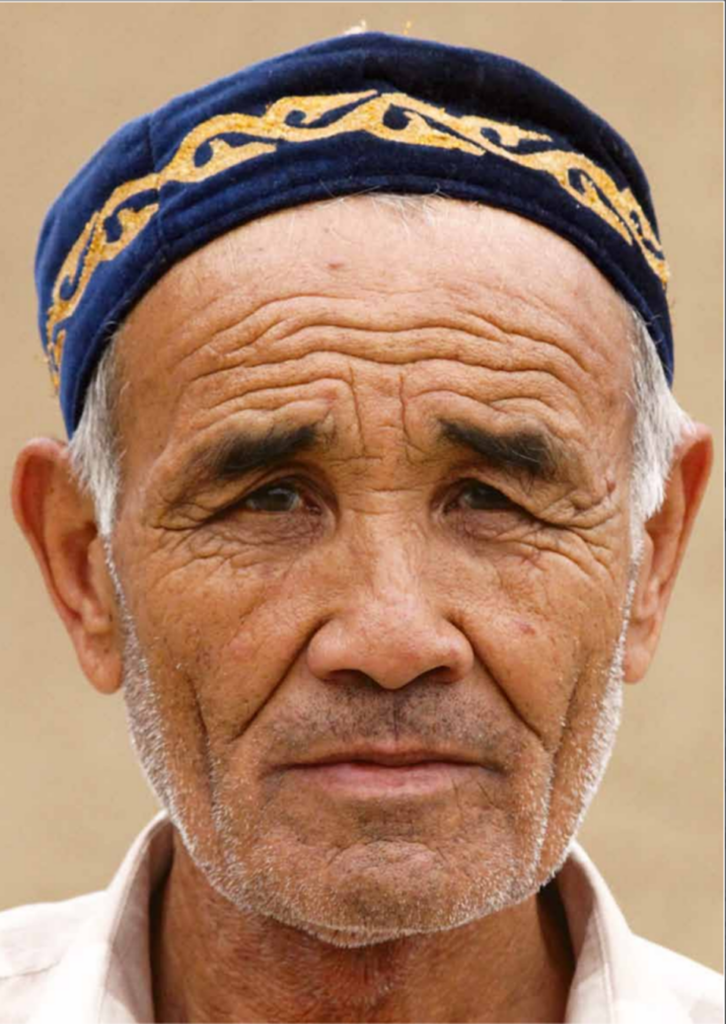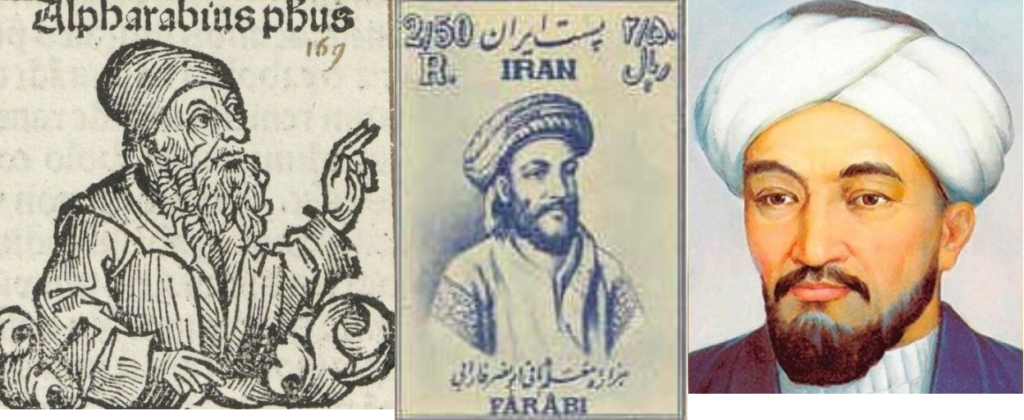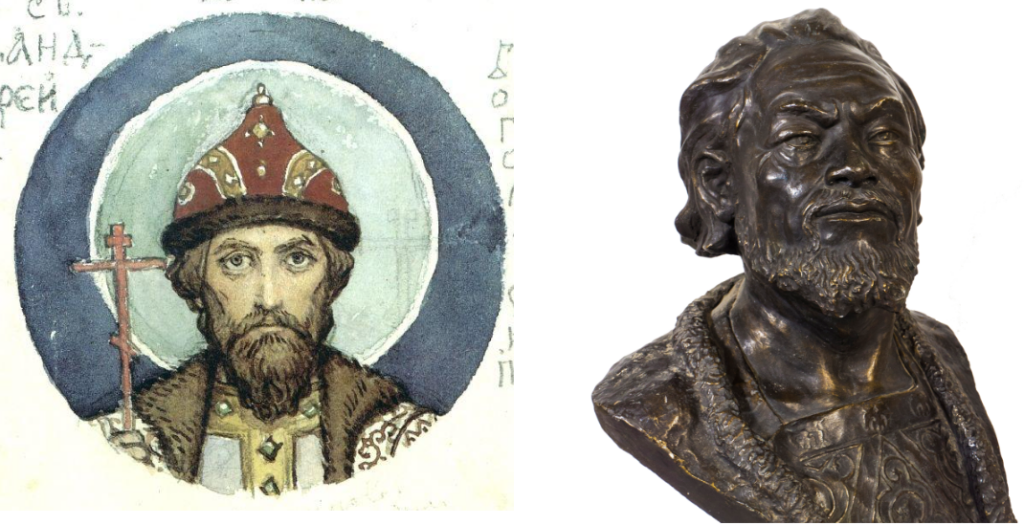Anthropology of the Kazakhs
Chapter 1 – Our Race
Turanid race
Readers of an older generation may recall Soviet-era posters featuring workers from three different races, or sometimes, three children—one blond European, another a black African, and the third a narrow-eyed Chinese child. These distinct types were also depicted in textbooks on biology, geography, and history. The image of the blond, the black, and the Chinese child was firmly ingrained in the public consciousness, reinforcing the notion that there are three races in the world. This understanding remains widespread—Russians as Caucasians, Kazakhs as Mongoloids, and Africans as Negroids.
However, I am not entirely certain that those who acknowledge the existence of these three human races can easily categorize individuals into these specific racial groups. Consider, for instance, dark-skinned and black-haired Indians or black-haired yet light-skinned Greeks. They don’t fit neatly into the categories of blacks, blond Europeans, or narrow-eyed Chinese. Where should Greeks be classified? And what about Indians? To which race do they belong?
Once upon a time, during my school days, I posed a similar question. Turning to the encyclopedia for answers, I discovered that the three well-known human races are referred to as major or primary races. Additionally, there are numerous smaller races, sometimes significantly distinct from one another yet affiliated with the major races. Surprisingly, Indians, along with Finns, Germans, Arabs, Caucasians, Balkans, Slavs, and others, are identified as part of the large Caucasian race. This classification suggests more anthropological similarities among these groups than differences, even though such similarities may not always be immediately apparent to the ordinary observer.
Delving deeper into my research, I developed a keen interest in the morphological differences among the smaller races. This exploration led me to the discovery of the Indo-Mediterranean race, encompassing inhabitants of Southern Europe, North Africa, Iran, and Northern India. Another fascinating revelation was the Baltic race, consisting of fair-haired Northern Europeans. Equally intriguing was the realization that our southern neighbors, Tajiks and Uzbeks, belong to the Pamir-Fergana race, which is also part of the large Caucasian race.
The Mongoloid race, on the other hand, is itself heterogeneous, incorporating smaller races such as the Arctic (Eskimos, Chukchi), Far Eastern (Northern Chinese, Koreans), and Malayan (Southern Chinese, Malays, Filipinos, Indonesians) races.
Finally, one of the most intriguing things I discovered during that time was the existence of a small race referred to by scientists as the South Siberian or Turanian race. The Soviet Encyclopedic Dictionary describes it as follows: ‘The South Siberian race (Turanian race) occupies an intermediate position between the Caucasoid race and the Mongoloid race, with Mongoloid features predominating. It is distributed in Kazakhstan, Central Asia, Altai, and Mongolia.’ This revelation indicates that Kazakhs are neither purely Mongoloids nor Caucasians but rather belong to the intermediate Turanian race.
My childhood curiosity uncovered a fact that initially surprised me. Nowadays, this fact is even documented in school textbooks, and it no longer elicits surprise. Furthermore, few people seem to pay attention to the mixed origin of the Kazakh ethnic group, though I find this topic particularly fascinating.
Kazakhs do not fall strictly within the categories of either the Mongoloid or the Caucasian race. Take a look at this portrait; while there are some Mongoloid characteristics present, they are not predominant. Even if certain Mongoloid features are discernible, does this person resemble a Mongolian or a Chinese individual? Not at all. It’s evident that the person in the photo is Kazakh. Observing the faces of passers-by on the street, it becomes clear that not all Kazakhs exhibit prominent Mongoloid traits; the appearance of the majority is mixed. The photographs in this section, for the most part, aim to illustrate the diverse origins within the Kazakh ethnic group

Tribe: Batyr, Sirgeli (Senior jüz).
Location: Saryagash District, Turkistan Region, Kazakhstan
Turanians (Turanids)
In the realm of humanitarian sciences like anthropology, a universally accepted rigid classification isn’t the norm. For instance, contrary to some theories that propose three major races (Caucasian, Mongoloid, Negroid), others posit five, including Australian Aborigines and American Indians as distinct large races. Consequently, a universally recognized classification of smaller races is also elusive.
Among Western anthropologists, many classifications—numbering around several dozen—exist. They categorize Central Asian inhabitants under an anthropological type known as Turanids. This classification sees Turanids as an anthropological type originating from a Caucasoid base with a layered Mongoloid element. According to Western anthropologists, part of Turanids, through intermingling with Mediterraneans, formed Pamirids (modern-day Tajiks and Uzbeks). Another segment of Turanids, mixing with Tungids (classical Central Asian Mongoloids), gave rise to Aralids (contemporary Kazakhs). Some classifications place Turanids within the Caucasian race, suggesting a precursor to the current South Siberian race, while others categorize them as Mongoloid. Most commonly, both Western and Soviet scientists view Turanids as an intermediate anthropological type.
Initially, the grouping of all Central Asian inhabitants into a single anthropological type may seem inaccurate given their apparent external differences. However, a closer look reveals that many individuals could easily belong to any or at least several Central Asian nations. The anthropological boundaries between these groups remain blurred, suggesting more similarities than differences. Western anthropology, by identifying Turanids as a distinct type, seems to emphasize common traits over differences, characterizing Turanids as type shared across Central Asia.
In Russian discourse, the term “Turanids” is frequently used interchangeably with the “South Siberian race,” if so – excluding Central Asian Pamirid Caucasians (Tajiks) from this classification. This approach is a simplified adaptation of Western terminology with Soviet anthropological standards, perhaps driven by the convenience of saying “Turanid” rather than “representative of the South Siberian race.” Despite this, it’s crucial to note that Turanids were originally conceptualized as a collection of types common to Central Asian peoples.
There is a distinct type that I refer to as “common Central Asian.” Individuals embodying this type are readily identifiable as belonging to our own in any or at least most of the Central Asian republics. They typically exhibit a sculpted elongated face, a prominent nose, often thick eyebrows, narrow eyes, and dark skin. Interestingly, this aligns precisely with the anthropological type termed “Turanids” by Western anthropologists.
A person on a picture below
Tribe: Elubai, Sirgeli (Senior jüz).
Location: Saryagash District, Turkistan Region, Kazakhstan

Location: Saryagash District, Turkistan Region, Kazakhstan
The Habit
Kazakhs are classified within the anthropological spectrum, positioned between two major racial categories. The prevalent societal perception of Kazakhs as Mongoloids can be attributed to a combination of objective factors and historical conditioning.
The objective rationale behind this perception lies in the overall Asian background of the Kazakh population, where Mongoloid features tend to be more prominent. While there is a diverse range of appearances among Kazakhs, including individuals with very light hair, the majority exhibit dark hair. A common trait among Kazakhs is the narrow eye shape, with some having extremely narrow eyes. However, it is not uncommon to find Kazakhs with distinctly European eye characteristics.
The varied physical attributes of Kazakhs, such as high cheekbones and coarse black hair, contribute to the overall Mongoloid impression. The anthropologist O. Ismagulov notes that, on average, the Kazakh ethnic group consists of approximately 70% Mongoloid and 30% Caucasian elements. This implies a prevalence of Asian characteristics, yet the presence of Caucasian features is not negligible.
Observing each individual Kazakh closely reveals a mixed heritage, with a discernible blend of Mongoloid and Caucasian traits. Despite the subtle variations in physical features among Kazakhs, the collective impression tends to lean towards a Mongoloid classification, influenced by characteristics like high cheekbones, dark hair, and relatively narrow eye shapes, even though these features are not universal among all Kazakhs. That is, with the implicit Mongoloid character of each individual, in general the Kazakhs seem to be Mongoloids.
The second reason why both we ourselves and others perceive us as Mongoloids appears to be influenced by a psychological factor intertwined with historical processes. The belief is rooted in the notion that ancient nomadic tribes of Central Asia exhibited a distinctly Mongoloid appearance. This stereotype extends to all Asian nomadic groups, encompassing the Huns, Scythians, Cumans, and other lesser-known tribes. The prevailing image of a nomad is one characterized by slanted eyes, high cheekbones, and a flat face.
This perception of nomads is perpetuated through artistic representations, shaping societal perspectives. Consider, for instance, Alexander Blok’s depiction of the “slanting eyes” of the Scythians or the portrayal of the Huns in the film “Night at the Museum,” resembling the modern Mongols. The prevailing belief is that an Asian nomad must exhibit distinct Mongoloid features. Given that Kazakhs are the descendants of Asian nomads and unconsciously associate themselves with historical nomadic groups like the Huns, Kipchaks, and Tatar-Mongols, there’s a subconscious expectation to resemble modern Mongols.
This historical habit reinforces the already noticeable Mongoloid characteristics in Kazakhs, overshadowing the 30% of Kazakh Caucasian identity. The psychological factor and the general historical background, in a complementary and aggravating manner, contribute to the habitual perception of Kazakhs as indistinguishable from Mongols. Even if a Kazakh possesses a completely Caucasian physical appearance, when questioned about their race, there is a high likelihood that they will habitually identify themselves as Mongoloids.
It is commonly held that all Central Asian nomads, including the Huns, Scythians, Tatar-Mongols, and others, were characterized by a distinct Mongoloid appearance. This perception extends to the Kazakhs as well. Consider the man portrayed in the image; he exhibits few Mongoloid features, with light eyes, an elongated face, and a non-flat nose—traits that deviate from the stereotypical Mongol appearance. Despite his atypical features, he is an ordinary Kazakh, a representation of the diversity within the Kazakh population. However, if asked about his racial identity, there is a high likelihood that he will respond with “Mongoloid.” This tendency reflects the power of habit and ingrained thought patterns— a stereotype deeply embedded in the collective consciousness. Both society at large and individuals within it, including our neighbors and ourselves, tend to perceive Kazakhs as Mongoloids. Yet, this perception does not align with the reality of the diverse physical characteristics present within the Kazakh population.

Location: Buldurty, Syrym district, West Kazakhstan region.
(Kaz: Байұлы – Масқар – Бабаназар. Булдурты, Сырымский район, ЗКО.)
=============================================
Please stay tuned, as translation is in progress…
=============================================
Previous – Anthropology of the Kazakhs – Foreword
Next – Anthropology of the Kazakhs – Chapter 2 – ORIGIN










